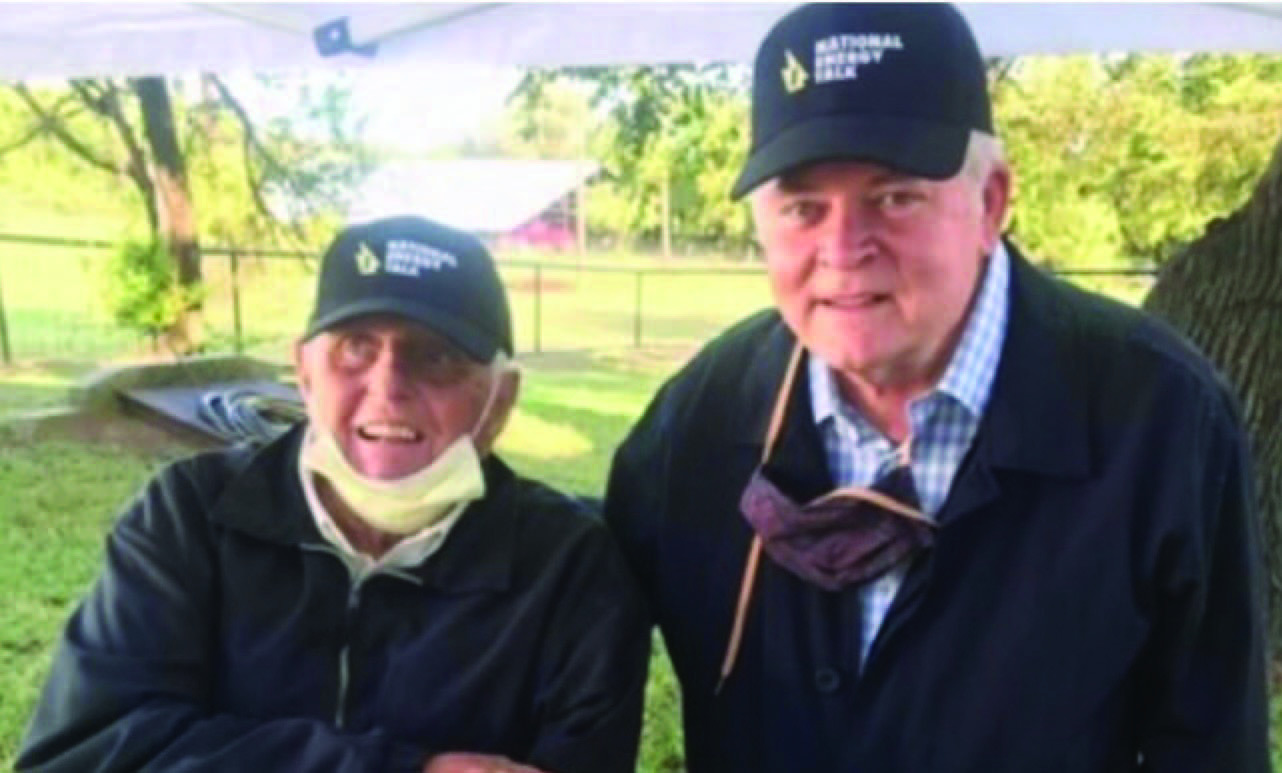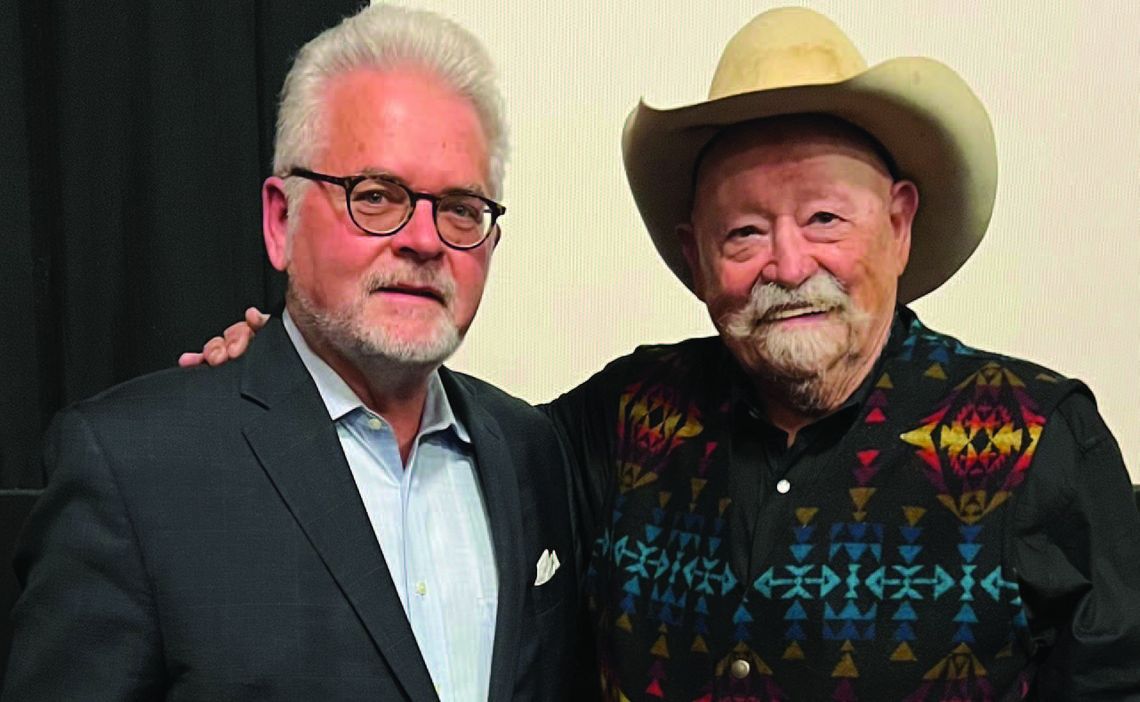As Executive Producer/Producer of documentary “Sherwood Forest: Top Secret,” PBS. org, Elk City native Mark Stansberry in association with Oscar- winning Producer Gray Frederickson, exposed the story of how Oklahoma roughnecks’ top-secret mission to drill for oil made victory possible in WWII. Although the story impacted the war’s outcome, it seems to have remained top secret to the world.
As an energy expert, Stansberry has wanted to tell the story for years, and he accomplished that with the late Gray Frederickson. The documentary that can be seen on OETA was written and directed by Greg Mellott. It was narrated by actor Barry Corbin. With Stansberry as the Executive Producer/Producer, they credited the Oklahoma History Center, Oklahoma Oil and Natural Gas (OERB), the Samuel Roberts Noble Foundation, the Oklahoma Historical Society, the Kirkpatrick Foundation, among others for the ability to bring the project to fruition. The documentary has been dedicated to the memory of Gray Frederickson who lost his battle with cancer while completing the film.
Since the release of the film, Stansberry and Frederickson have been nominated for a 2023 Heartland Emmy. “Sherwood Forest: Top Secret,” was inducted into the Oklahoma Movie Hall of Fame, along with Stansberry and Frederickson as the producers. The pair have both been individually inducted into the Oklahoma Movie Hall of Fame for their contributions to the film industry.
Stansberry has wanted to have this story told since the 90s when he was asked to be a member of the International Society, the Energy Advocates. The organization was founded in 1974 because of the oil embargo. There was a group of Oklahoma oil men and energy leaders who started the organization, and they would travel around the country talking about energy.
“They (Energy Advocates) asked me to be a member of the organization. I started attending meetings about 1990, it (the organization) was based in Tulsa. While I was at a meeting, there was a gentleman, Jay O’Melia, who was a sculptor. He came to the meeting, and he talked about the ‘Oil Patch Warrior,’ a sculpture that he wanted to put in Nottinghamshire, England, at Sherwood Forest. The sculpture is symbolic of the roughnecks who went to Sherwood Forest in 1943. I didn’t know a whole lot about that story at the time. They asked us to contribute to the project, and they actually went over (to England) in 1991. The statue was erected in England. There’s a museum there as well. The statue and members of the Energy Advocates got my interest because I really didn’t know anything about it at the time, that was over 30 years ago,” Stansberry explained.
In about 2000, or ten years later, the Energy Advocates wanted to erect a statue in Ardmore because many of the initial leadership of oil came from that area. Lloyd Noble was one of the key people, as well as some others that helped launch the roughnecks to Sherwood Forest.
“That year (2000) Energy Advocates started a campaign effort to erect a statue in Ardmore, and they asked if I’d help with that, so I did. I helped on the fundraising side of making sure there was a statue in Ardmore. There was a dedication in Ardmore’s Memorial Park, downtown, in honor of the Oil Patch Warrior and the roughnecks. Energy Advocate Chairman, Mac Alloway led the dedication effort. I was part of the committee, but he was the leader of making sure that it happened,” Stansberry continued.
Alloway continued to serve as chairman and Stansberry served with him as president, 20032009, of The Energy Advocates. During his tenure as president, Stansberry spoke about the roughnecks’ contribution to the war effort, which spurred his interest in bringing the story to the public because little has been known about the top-secret mission.
“In 1943, the British were needing help in their oil production. The British, in Sherwood Forest, were only producing between 150 to 300 barrels of oil per day. That was not enough to do much when it comes to a war effort, they needed more oil. They didn’t have the technology/ expertise to get it done as quickly as they needed it. So the British sent over an official who was putting the war effort together, landing in New York. He wound up arriving in Ardmore at the steps of Lloyd Noble’s house and said they needed his help. Lloyd Noble said, yes that he wanted to help. He put together a list of Oklahoma oilmen and about 44 roughnecks. They went over to Sherwood Forest during World War II, in 1943,” he said.
The mission had to be top secret and in camouflage. They lived in a monastery in Sherwood Forest. It was a very low-profile mission because of the danger.
“Some of the equipment did not reach England because it was destroyed. Within a year, their aim was to drill about 100 wells or to get the wells to produce 3000 barrels of oil per day. And they did it. There was no doubt that the oil was significant. The oil from Sherwood Forest was used for D Day. The war efforts played a great part, by not only by the soldiers on the ground, but the women who sacrificed while husbands went over there. One gentleman did lose his life on the rig. He was the only person that had been buried in a British military graveyard at that time,” Stansberry added.
Stansberry took the story to Frederickson, and together they put it on film. They brought together an award-winning team that debuted as a World-Premiere on Dec. 29th, 2022.
“Gray (Frederickson) had ties to oil, his great grandfather was a founder of ONG and his father was an oilman. He took a great interest in making sure this was produced. He said this was one of his better films because of the message. We had an Emmy -winning director along with an Emmy nominated actor, Barry Corbin, narrator, they both did an outstanding job. Corbin has been in well over 200 films including ‘Urban Cowboy,’ ‘War Games,’ and most recently ‘Yellowstone,’ and ‘Tulsa King,’” he noted.
Stansberry said that about 25 percent of the copies of the footage/images came from archives in England, and it has actual footage from WWII that their crew colorized. About 58 members of the cast and crew were from Oklahoma, with only two that came from California. Stansberry said the film came together in about a year and a half, although they had been trying to get it produced for several years.
The film shows the significance to the outcome of WWII, and this film documents Oklahoma’s roughnecks’ determination, perseverance, true grit, and patriotism. Those traits seem to continue to be true of the profession. For more information about viewing this documentary for schools and for group settings, go to www.okhistory.org





